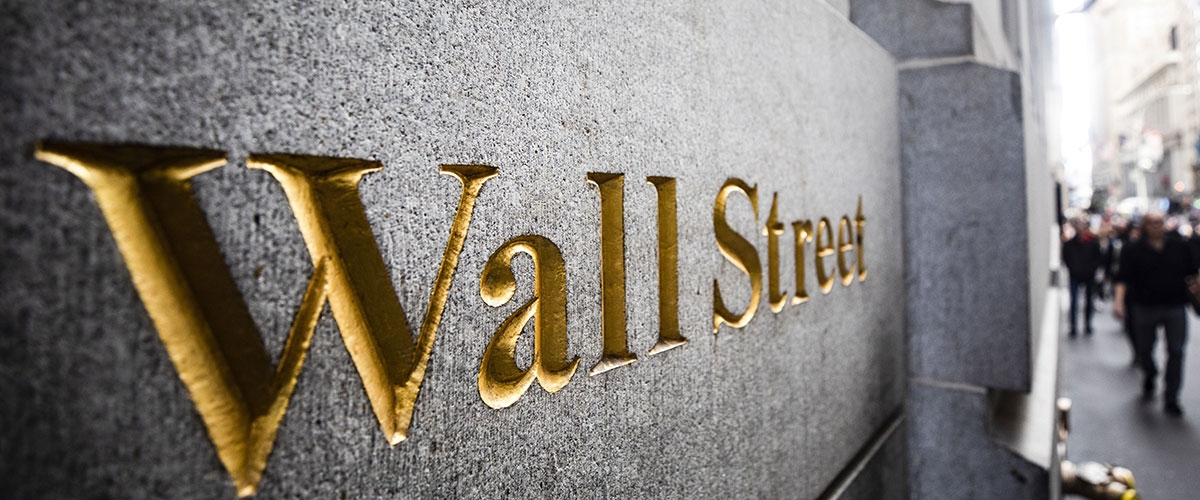
Comprehensive Guide to the New York Stock Exchange: History and Evolution
The New York Stock Exchange (NYSE) is the largest stock exchange in the world by market capitalization, trading billions of shares every day. The origin dates back to the late 18th century when traders began gathering on Wall Street to buy and sell securities.
The history of the NYSE has been closely tied to the economic growth of the United States and for many years, it has been a global symbol of capitalism. In this article, we will explore the formation of the NYSE, its early history and how it has evolved over time.
Formation of the NYSE
The NYSE was formed on May 17, 1792 when a group of 24 stockbrokers signed the Buttonwood Agreement, named after the buttonwood tree under which they met on Wall Street. The agreement created a formal organization for the trading of securities, setting standards and rules for the brokers to follow.
Prior to the formation of the NYSE, the trading of securities was unregulated and occurred in various locations, including coffeehouses and taverns. The Buttonwood Agreement brought order to the market and helped to establish the NYSE as the premier exchange for trading stocks in the United States.
Early History of the NYSE
Initially, the exchange was known as the New York Stock and Exchange Board and the first headquarters was at the Tontine Coffee House at 82 Wall Street. It would not be until 1863 that the exchange adopted its current name, the New York Stock Exchange.
In the early days of the NYSE, trading was conducted in a small room at 40 Wall Street. The brokers would gather around a wooden podium, where the secretary of the exchange would read out the latest prices of the stocks being traded. Over time, the exchange grew in size and influence, attracting new listings and investors.
One of the most significant events in the early history of the NYSE was the Panic of 1837, a financial crisis that saw widespread bank failures and a sharp decline in stock prices. Despite the turmoil, the NYSE managed to survive and adapt, introducing new rules and regulations to prevent similar crises in the future.
Further Expansion of the NYSE
Throughout the 19th century, the NYSE continued to expand, with the number of listed companies growing from just a handful in the early days to several hundred by the end of the century. In 1863, the exchange moved to a new building at 10 Broad Street, which was specifically designed to accommodate the growing number of traders and investors.
By the late 19th century, the NYSE was becoming a global financial powerhouse. In 1896, the Dow Jones Industrial Average (DJIA) was created. While the DJIA has gone through many changes over the years, it is a price-weighted index of 30 blue-chip stocks that are traded on the NYSE. The DJIA is one of the most widely followed stock market indexes in the world and serves as a barometer of the US stock market.
In the early 20th century, the NYSE continued to change, introducing new technologies and trading practices. In 1907, the exchange faced another crisis, known as the Panic of 1907, which saw a run on the banks and a sharp drop in stock prices. Once again, the NYSE weathered the storm and emerged stronger, introducing new regulations and systems to prevent future crises.
By 1929, the NYSE had become the world’s largest stock exchange by trading volume, just before the stock market crash triggered the Great Depression. Fortunes were lost in the crash of 1929 but post-war economic activity a few decades later helped to reignite economic growth and the NYSE.
Evolution of the NYSE
Over the years, the NYSE has continued to evolve and adapt to changing market conditions. An important event in its history was the introduction of electronic trading in the 1970s. Electronic trading replaced the traditional open outcry system, where traders would physically buy and sell stocks on the exchange floor. Electronic trading made it easier for investors to buy and sell stocks and it increased the speed and efficiency of the trading process.
In recent history, there have been other important developments for the NYSE. On April 4th, 2007, the NYSE merged with the Euronext, creating the NYSE Euronext. The NYSE Euronext was first global equities exchange. In 2013, the NYSE Euronext merged with the Intercontinental Exchange (ICE), a global network of exchanges and clearing houses. While the Euronext was shortly spun off on its own, the merger created one of the largest exchange operators in the world, with a broad range of products and services for investors.
Another important development at the NYSE was the rise of high-frequency trading. High-frequency trading is a type of trading that uses advanced algorithms and computer programs to make trades in milliseconds. This type of trading has become increasingly popular in recent years and it has led to concerns about the impact of high-frequency trading on market stability and fairness.
Today, the NYSE is a global symbol of finance and capitalism, with companies from all over the world listing on the exchange. It has also played a central role in some of the most significant events in modern financial history, including the Great Crash of 1929, Black Tuesday of 1987, the dot-com bubble of the late 1990s and the financial crisis of 2008.
Role in Modern-Day Finance
The NYSE plays a critical role in modern-day finance. It provides a platform for companies to raise capital by selling shares of stock to investors. In addition, it provides investors with a way to invest in companies and potentially earn a return on their investment.
The NYSE is also closely watched by financial analysts and economists, both domestically and internationally, as an indicator of the health of the US economy. When the stock market is performing well, it is often seen as a sign of a strong economy. Conversely, when the stock market is performing poorly, it can be a signal of economic weakness.
The Future of the NYSE
The future of the NYSE is bright, with many exciting developments on the horizon. As the world's largest stock exchange, the NYSE is constantly looking for ways to improve and innovate in order to stay ahead of the competition and provide the best possible service to investors.
One of the key areas of focus for the NYSE is technology. In recent years, the exchange has invested heavily in new technologies such as blockchain and artificial intelligence in order to improve the efficiency and security of the trading process. These technologies have the potential to transform the way that securities are traded, making the process faster, cheaper and more secure.
Another area of focus for the NYSE is expanding its global reach. The exchange has already established partnerships with exchanges in other countries, such as the Euronext and the Tokyo Stock Exchange. These partnerships have helped to create a more interconnected global financial system, making it easier for investors to trade securities across borders.
In addition to expanding its global reach, the NYSE is also focused on expanding the types of securities that are traded on the exchange. In recent years, the exchange has started to list more non-traditional securities such as exchange-traded funds (ETFs) and special purpose acquisition companies (SPACs). This trend is expected to continue, with the exchange exploring new ways to attract a wider range of investors.
The NYSE: Humble Beginnings to Global Leader
The New York Stock Exchange has a rich history that dates back over 200 years. From its humble beginnings under a buttonwood tree to its current position as the world's largest stock exchange, the NYSE has played a central role in the development of modern finance. As we look to the future, the NYSE has the resources and expertise to stay ahead of the competition and continue to innovate. The NYSE will continue to adapt and evolve, reflecting the changing nature of the global economy and the financial markets.
ADVERTISEMENT

